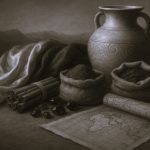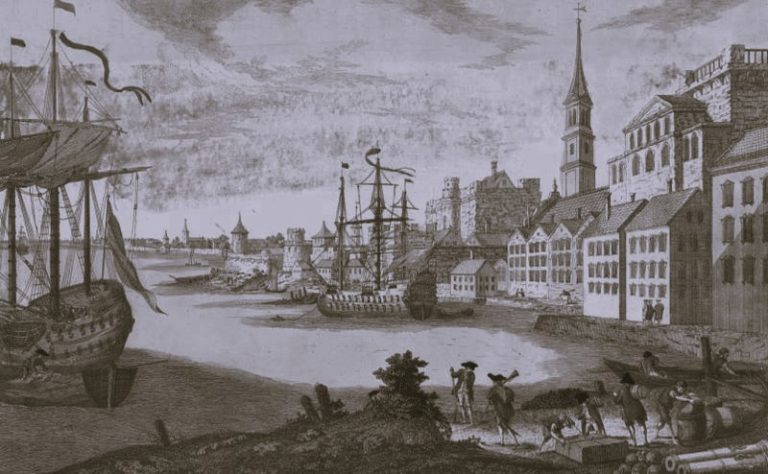

The Byzantine Empire, is one of the most tragically understudied topics in modern American historical curriculum.
By Gabriel Johnson
Introduction
Not only did Byzantium achieve greater feats of art and science than Rome, they safeguarded (and advanced) for nearly 1,500 years the ancient knowledge of the Greeks and Romans. Combined with exposure to Islamic and far eastern (India and China) learning and wisdom, the Byzantium Empire was at one point, the height of knowledge on Earth. Evidence suggests the European Renaissance was brought about an influx of, “Greek,” scholars from 1200- 1450. To support this reasoning, three questions should be answered:
- How, when, and why did the rise and fall of the Byzantine Empire occur?
- How much knowledge was exchanged between the, “East” and “West” leading up to the fall?
- How was the Renaissance influenced by the influx of Byzantine refugees?
Rise of the Empire
In 284 AD Roman Emperor Diocletian split the Roman Empire into two parts leading to the creation of the Western and Eastern Roman Empires. Economic inequality meant that eventually the Eastern Roman Empire became the seat of power. In 330 AD Emperor Constantine moved the Capital to his new city in Byzantium, Constantinople. The continual financial burden of propping up Rome combined with continuous barbarian attacks and infighting would lead to the eventual fall of the Western Roman Empire in 476 AD. The Eastern Roman Empire would continue as Byzantine Empire for nearly 1,000 more years. (Gibbon)

Byzantium held great influence for many years. There were many attempts to restore the Empire of ancient Rome. None was more successful the Emperor Justinian I who, with his general, Belisarius, managed to take back the whole of Italy and several other important states. (Spielvogel)

But the face of the Mediterranean had changed; holding an empire of that size was too hard to maintain. However, despite setbacks, the Byzantine Empire remained a major regional power until the mid 1200s. (Spielvogel)
Decline of the Empire
The Fourth Crusade was the beginning of the end of Byzantium. Civil and religious unrest between, “Greeks and Latins,” (Orthodox and Catholic or western and eastern Europeans) during the early 1,200s had erupted into bloody riots. Matters were further exacerbated by lack of a clear leader (as the Byzantians elected their emperors). Crusaders on their way to the Middle East were able to take advantage of the situation and in 1204 AD, took the City. (Millar)
The resulting massacre (considered unprecedented even in the middle ages) cast tremendous wounds between the east and west for years to come and permanently weakened Byzantium. (Wikipedia)
Proxy Empires were established in Nicaea and Terbizond but with no clear leader the Empire was effectively dead. (Millar)

Eventually, in 1261, Emperor Michael VIII was able to reclaim the city, but the damage had been done. The majority of the final days of the Empire were spent in civil war. (Wikipedia)

Led by Sultan Mehmed II, the Ottoman Turks steadily advanced through the remnants of the once mighty Byzantine Empire. Drained of wealth and power, outnumber 10 to 1, the last Roman Emperor, Constantine XI made his stand at Constantinople; his pleas for aid largely spurned by the rest of Europe. On May 29th, 1453 AD, after two months of siege the Theodosian walls were breached and Constantinople fell. Stories tell of Constantine XI donning Roman armor and leading his last few men in one final charge.

Exchange of Knowledge
The Greeks and Romans has developed science, math, and philosophy for over a thousand years. While much wisdom was lost in western Europe due to the barbarian invasions, Greco Roman knowledge remained in Byzantium. (Hartmann) Islamic science borrowed from old Greek learning as well as further eastern knowledge from India.

It was common for Islamic and Byzantian scholars and craftsmen to exchange information. Despite war, it was not uncommon for Greeks to study in Byzantium and visa versa. Islamic engineers used Byzantian science to build the Dome of the Rock and Gregory Choniades, a Byzantian, studied and translated Islamic texts on math and astronomy into Greek. (Spielvogel Wikipedia)
While most Islamic learning made its way to western Europe through Byzantium, Sicily served as another important gateway. The island kindom served as a common port for Arab, western, and Greek, traders. This allowed for a blending of cultures known as, Norman-Arab-Byzantian Culture. (Wikipedia)
Byzantine Science and Engineering

Domes became a staple of eastern architecture and can still be seen in many modern government buildings around the world.

Greek fire is a stunning example of Byzantian chemistry.
The exact makeup is unknown; but it was reported to act as napalm, sticking to everything and remaining lit even on water.
The Byzantians used Greek fire in several influential naval battles, and to guard Constantinople. (Wiki)
Often scientific and artistic creativity go hand in hand, and the Byzantians were no exception. They continued the Greco-Roman tradition of stunning (often functional) art.
Byzantine Art and Philosophy

Advanced mosaics fill churches to the brim. and sculptures were fantastically lifelike.
Advances in art, law, and philosophy were made during the Macedonian Renaissance during the Macedonian dynasty founded by Basil the First in 867.
Bans on religious paintings were lifted, trade guilds were established to provide a better voice to the workers, and additional academies were built. It was time of booming success. (Gibbons)

Byzantian philosophy was rooted both traditional Greek Aristotelian thought as well as Orthodox Christianity.
Law was highly developed from earlier Roman laws and Republican ideas were strong for nearly a millennia; Emperors were elected!
In the 1200s the might of Byzantium had began to decline and immigrants began to flee to Europe. This included many scholars who would bring accumulated knowledge with them. (Hartman)
Byzantine Influence on the Renaissance
After the sack of Constantinople by the crusaders it was clear to many Greeks that the empire would not recover. Wave after wave of Byzantians would immigrate to the Christian west; many to Italy due to its close proximity.
Byzantian refugees found fertile ground in Italy. The 1200s were a time of relative Italian stability. Furthermore, western Europeans were beginning to rediscover Greek and Roman writing, there was a renewed interest in philosophy, and cathedrals and castles began to spring up. (Spielvogal)

The spark was already in Italy, but Byzantian scholars brought the knowledge to light the rebirth. Advances in every discipline appeared.
A return to the classics lead to the philosophy known as Humanism. Humanism centered on teaching literacy, history, grammar, logic, etc to the citizenry.
Questioning was a natural part of the philosophy and an interest in science was renewed as a method to answer questions.
Humanism has an important influence to this day. (Wiki)
Philosophy, Art, and Science

Renaissance art showed tremendous advancement. Intense practice into three dimensional, realistic paintings were conducted and perfected.

St. Peter’s Basilica is a stunning example of the culmination of Greco-Roman, Italian, and Byzantian engineering architecture. (Columns, windows, domes)
Conclusion
This set out to provide the answer to the questions:
- How did the Byzantine Empire rise and fall?
- What was the exchange of eastern and western knowledge?
- How did this knowledge (brought by refugee scholars) influence the Renaissance?
The Byzantine Empire was a direct continuation of the Roman Empire. It was exiled during the fourth crusade in 1204 and destroyed by the Ottoman Empire in 1453. Because of its heritage, Byzantium was able to continue and develop upon the philosophy and science of the Greeks creating marvelous works of law, art, and engineering. Furthermore due to the close proximity of the empire to the Arab states as well as trade with Sicily, additional schools of thought were able to exist in Byzantium, adding to its culture and allowing for several smaller Eastern Renaissances (The Macedonian Renaissance and the Renaissance of the 12th Century). Finally, due to the weakening of the Empire from the Latin unrest, the sacking of Constantinople, and its eventual fall, Byzantian (Greek) scholars fled, mainly to Italy. This rapid reintroduction of knowledge came at a time when Europe was beginning to yearn for learning and kicked off the Renaissance, impacting the world to this day.
Citations
- Byzantines in Renaissance Italy. (n.d.). Retrieved from https://www.the-orb.net/encyclop/late/laterbyz/harris-ren.html/
- Gibbon, E. (1776). History of the Decline and Fall of the Roman Empire.
- Gilles, & Jo, E. (2006, August 15). Immigration and Identity in the Middle Ages : French Immigrants to … Retrieved from https://journals.openedition.org/cem/418
- Greek scholars in the Renaissance. (2018, October 23). Retrieved from https://en.wikipedia.org/wiki/Greek_scholars_in_the_Renaissance
- History of the Byzantine Empire. (2018, October 19). Retrieved from https://en.wikipedia.org/wiki/History_of_the_Byzantine_Empire
- Miller, W. (1908). The Latins in the Levant: A history of Frankish Greece (1204-1566). London: Murray.
- Spielvogel, J. J. (2008). Western civilization: A brief history: Comprehensive volume. Belmont, CA: Thomson/Wadsworth.
- Hartmann, H., & Wittje, R. (n.d.). Islamic Science and the Making of the European Renaissance. Retrieved from https://mitpress.mit.edu/books/islamic-science-and-making-european-renaissance
- Norman, Arab, Byzantine Culture (2018, October 11). Retrieved from https://en.wikipedia.org/wiki/Norman-Arab-Byzantine_culture
Originally published by ESRI, Fall 2018, republished with permission for ecuational, non-commercial purposes.






